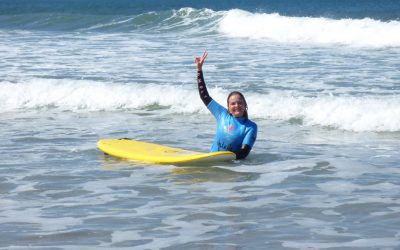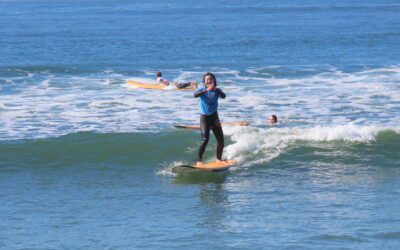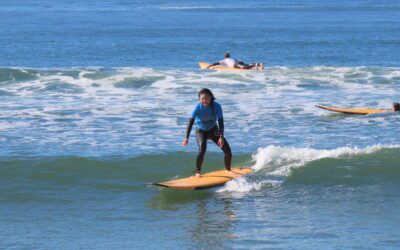Whether you are a beginner, advanced or a pro surfer one thing we have for sure: you are always looking for the perfect day of surfing. Who can blame you? Surfing the perfect waves is a mood booster, great for improving our level of surfing and, best of all, have fun. Of course, the ‘’perfect day’’ isn’t the same for all types or surfers. Learning to read a surf forecast is a skill you will benefit in all stages of your surfing evolution, so we prepared a simple explainer of the key indicators to read a surf forecast.
Tide
We could start by all the other key indicators to read a surf forecast but learning how the tide works in the surf spots you usually surf is very important for you to decide what is the best time to surf. There isn’t a correct answer for this question, as it will depend on many factors, like the kind of surf break. There are some surf peaks that work better during the high tide, others will form better waves on the low tide or even the beaches that bring the best potential in the mid-tide. If you truly want to learn about the key indicator to read a surf forecast, we recommend you start by observing a lot or asking locals what the best tide for the surf spot you’ll surf is.
Wind Direction
Again, you could be asking why we are still not talking about the size of the waves, but that indicator doesn’t really matter if the wind direction is not the best. Wind direction and strength can destroy waves. That’s why we decided to speak already about this key indicator to read a surf forecast. Wind can be divided in two main groups: on-shore and off-shore winds.
Although on-shore winds may be good sometimes for practicing some maneuvers, they usually represent worst-looking conditions and will affect the quality of the waves.
Off-shore winds are winds coming from land hitting the waves directly. They usually allow the wave to keep rolling until shore. However, when they are very strong it’s harder to paddle into a wave, as the wind will keep pushing you back.
Wind Strength
Sooner or later, you will understand the impact this key indicator to read surf forecasts can have in the quality of the waves. Windier days will impact the waves more than days without wind. So, much likely you will prefer days without wind. As mentioned above, offshore winds are perfect sometimes, but even those can influence negatively your surf when their speed is very high.
Depending on which surf forecast website you will use, the wind speed or strength is usually represented in km/h (kilometers per hour) or nots. You are looking for days with lower speeds, especially if it’s a wind that will hit the surf peak sideways or from the opposite direction (onshore). If it’s an offshore day anything between 0-15 km/h will be good for surfing, but this may differ from surf spot to surf spot.
Swell Size
You will understand in the surfing world everybody loves to add a couple of centimeters to the size of best wave they caught that day. That’s because this key indicator to read surf forecast is associated with a higher level of surfing. Bigger waves usually require more skilled surfers.
The size of the waves is measured in meters or feet. Here, understanding your level of surfing is very important, more than in any other key indicator to read surf forecasts. Beginners should opt by waves with less than 1 meter (3 feet), while more advanced surfers like to surf waves bigger than 1.5 meters.
Swell Period
The swell period is simple. The shorter the time of swell period, which is measured in seconds, the weaker the surfing will be and longer the set of waves will take to arrive.
You are looking for days with higher swell periods, so anything above 9s will be good. If it goes very high it can represent days with more energy and bigger waves.
Swell Direction
This key indicator is important to read surf forecasts and it involves some understanding of the direction the beach is facing. For example, if there is a swell coming from northern directions, a beach that is facing south will be less receptive to the swell and will not produce a lot of waves. If there is a swell coming from south, the swell will directly impact the surf peak and waves will be greater.
Energy
This is not available in every surf forecast but we like it because it gives us a real feel about the power each swell is bringing. Surf forecast has it represented in kJ and it works proportional to the swell size. Bigger swells bring a lot of energy with them. To start, you should opt by days with less energy. Just like in the swell size, each surf break will react differently to the energy. Learn how this key indicator to read surf forecasts is impacting the surf beaches you surf.
To Sum Up
Understanding the key indicators to read surf forecasts is a very important skill that will ensure your surfing level matches the real sea conditions or that you will surf the best waves of your life. These key indicators to read surf forecast may differ from website to website you opt for. There are a few available like Surf Forecast, Magic Seaweed, Surfline or Windguru. We recommend you either choose the best one for you or that you check more than one platform to compare the key indicators to read surf forecasts.
If you have any doubts, contact us so we can help you achieve the surfing knowledge you need to surf better. You can also subscribe our newsletter to keep updated with all the tips and news we share about surf.
Last Articles
Find out more about the surfing word in our blog posts. We bring you every week different news, tips and surfing knowledge. How can you not benefit from that?
Top Reasons to Learn Surfing in Northern Portugal
Olá Surfing Enthusiasts How's it Going Surfing is so beautifully infused with pleasure and delight. Surfers around the world have admitted that it...
Surf School Povoa De Varzim – Estela Surf & Hostel
Welcome to a world where the waves whisper tales of adventure and the ocean breeze carries a promise of unforgettable experiences. At Estela Surf...
Estela Surf & Hostel – Porto Surf School in April 2024!
Porto Surf School - Introduction Hey there, surf enthusiasts and adventure seekers! Are you ready to experience the thrill of riding the waves in...



